The Evolution of Engineering and the Role of Observability 2.0 in Shaping the Future
Engineering has come a long way since the days of delivering discrete, point-in-time products that were often packaged on a CD and shipped to customers. The days of physical media and long development cycles are long gone. The advent of cloud computing and the rise of Software-as-a-Service (SaaS) transformed the landscape, creating a new model of continuous development and service delivery. This shift has not only revolutionized how software is developed, but has also redefined the engineer’s role.

By: Brian Chang
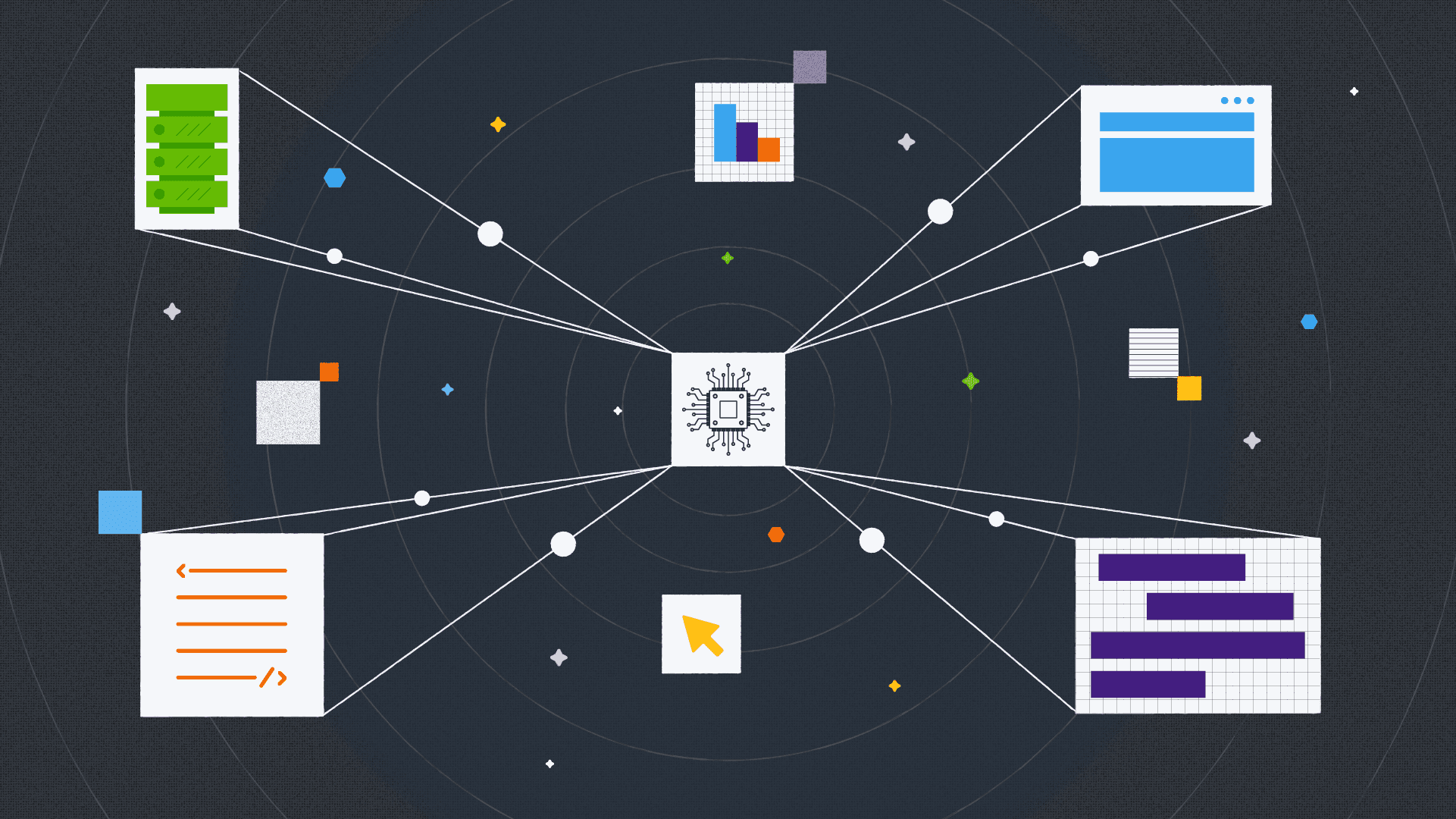
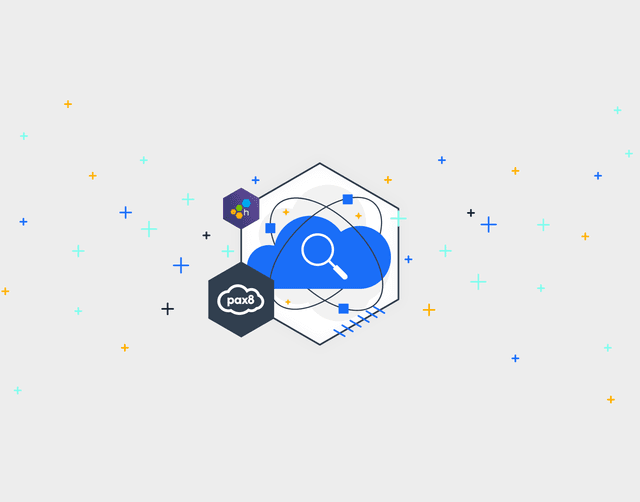
Nurturing a Culture of Curiosity With Observability 2.0
Learn MoreEngineering has come a long way since the days of delivering discrete, point-in-time products that were often packaged on a CD and shipped to customers. The days of physical media and long development cycles are long gone. The advent of cloud computing and the rise of Software-as-a-Service (SaaS) transformed the landscape, creating a new model of continuous development and service delivery. This shift has not only revolutionized how software is developed, but has also redefined the engineer’s role.
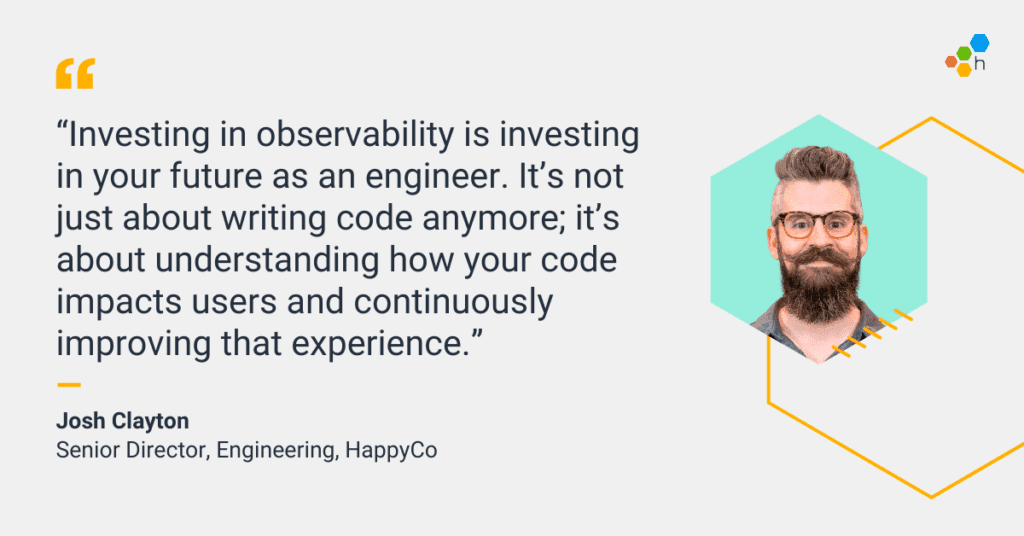
Just a few years ago, the focus was heavily on the technical challenges of getting software to work—connecting disparate systems, ensuring compatibility, and handling the fragility of early tech stacks. It was like trying to manage a busy restaurant where every detail—from the kitchen to the front of the house—had to be carefully coordinated to deliver a seamless dining experience.
Today, the restaurant analogy still holds, but the dynamics have changed. Nick Travaglini, Senior Technical Customer Success Manager at Honeycomb, captures this evolution well: “The engineering landscape has evolved from a focus on technical hurdles to a broader emphasis on team coordination and collaboration. Modern engineering requires that each team member’s contributions are in sync to ensure a smooth, continuous service.”
It’s faster than ever
With software companies now functioning as service providers, the feedback loop between engineers and users is faster and more direct than ever. Where once there were multiple layers of mediation between the product and customer, now engineers can and should be receiving near-instant feedback about their software’s performance.
This shift has brought observability to the forefront as a crucial tool for understanding and improving customer experience. Imagine engineers getting instant feedback from a user who’s frustrated by a slow-loading feature—they’re not waiting weeks or months for this input anymore. Instead, they’re receiving real-time data that helps pinpoint the root cause of the issue so they can make targeted improvements to fix the user experience on the fly.
Observability 2.0 represents a significant leap forward. Unlike traditional monitoring, which often focuses on the health of the system itself, observability 2.0 is centered on the customer’s experience with the software. This new paradigm places a premium on metrics like latency and error rates, equipping engineers to gauge whether their software is meeting market expectations.
For those unfamiliar with the differences between observability 1.0 and observability 2.0, it’s actually quite simple: observability 1.0 distributes your telemetry signals across many different tools and formats (the famous “three pillars” model), while observability 2.0 relies on a single, unified source of truth. To learn more, read this piece from Charity Majors on versioning observability.
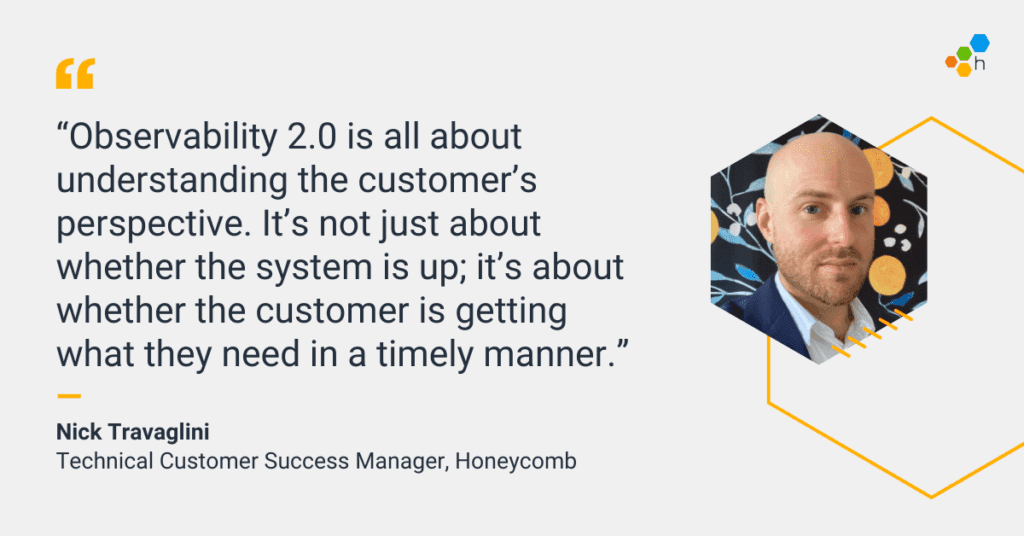
Nick emphasizes the importance of this shift: “Observability 2.0 is all about understanding the customer’s perspective. It’s not just about whether the system is up; it’s about whether the customer is getting what they need in a timely manner. Are their requests being fulfilled promptly? Is the service level aligning with their expectations? This focus helps engineers prioritize improvements based on real user needs.”
Modern observability = service-driven
As businesses have become more service-oriented, they must now dive into understanding and responding to customer needs like never before. Observability 2.0 delivers the sharp insights engineers need to make smart decisions about both software performance and customer satisfaction. It empowers them to move past just the technical details and zero in on crafting a truly exceptional user experience.
“The future of engineering is intrinsically linked to observability,” explains Josh Clayton, Senior Director of Engineering at HappyCo. “Investing in observability is investing in your future as an engineer. It’s not just about writing code anymore; it’s about understanding how your code impacts users and continuously improving that experience. Observability gives engineers the data and insights needed to make strategic decisions that align with customer expectations.”
New to Honeycomb? Get your free account today.
Tools like AI and advanced development platforms are taking over more routine engineering tasks, allowing engineers to focus on higher-level problem-solving and customer-centric innovations. Observability 2.0 is a key enabler in this shift, helping engineers raise the bar by providing a deeper understanding of how users interact with their software.
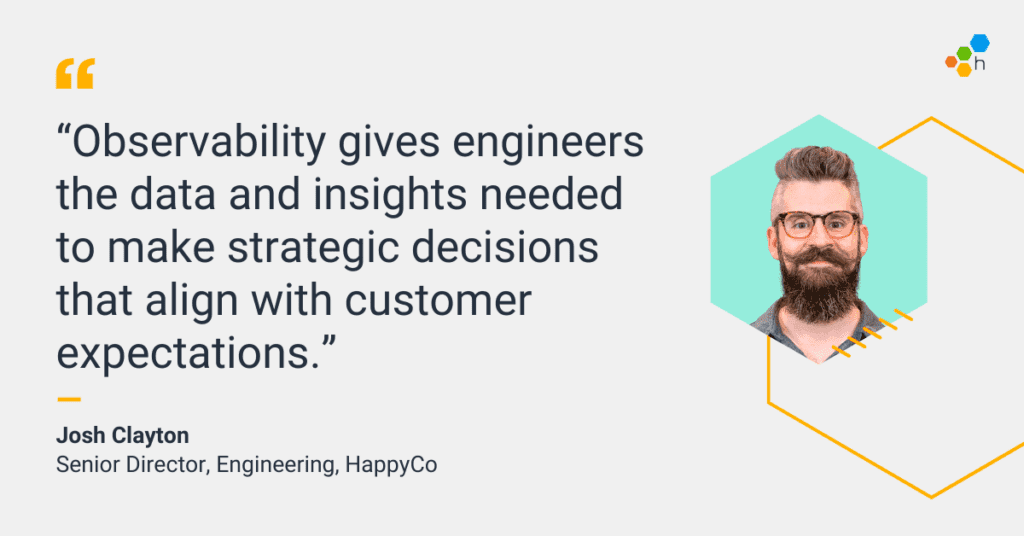
As Josh shares, “Ultimately, the role of modern engineers is less about grappling with technical challenges and more about anticipating and meeting customer needs. Observability 2.0 is central to this evolution, empowering engineers to enhance their products and services continually. By leveraging these insights, engineers can ensure their solutions are performing well and delivering exceptional value to their users.”
It’s not if, it’s how well
The question is no longer whether engineers can solve complex technical problems, but how well they can use their tools and insights to understand and delight their customers. Observability 2.0 is at the heart of this transformation, driving innovation and excellence in the modern engineering role.
It’s about seeing beyond the code and into the lived experience of the user, making engineering as much about human interaction as it is about technology.
Want to learn more? See how Pax8 transformed to an engineering culture of curiosity with observability 2.0.
Want to know more?
Talk to our team to arrange a custom demo or for help finding the right plan.